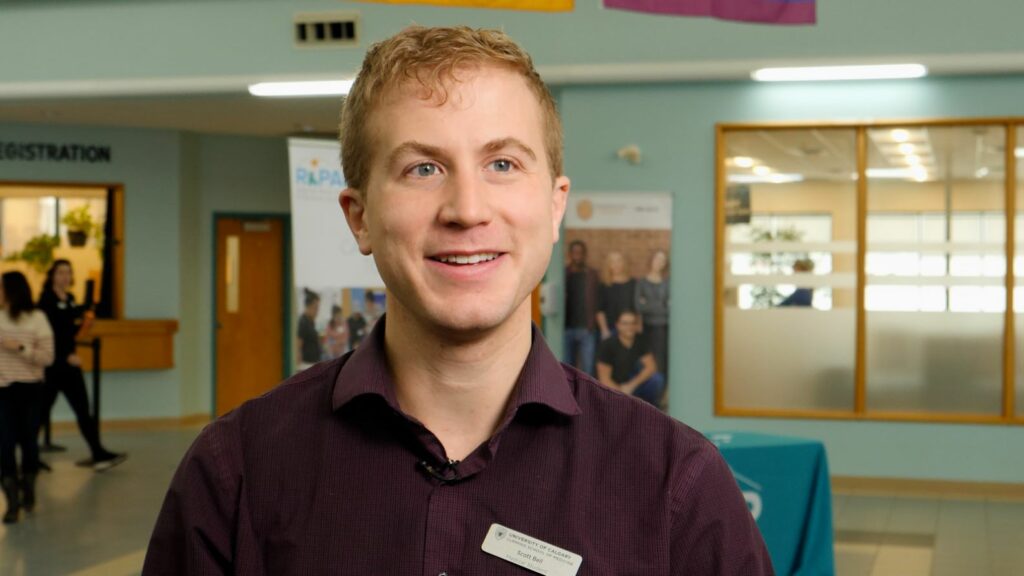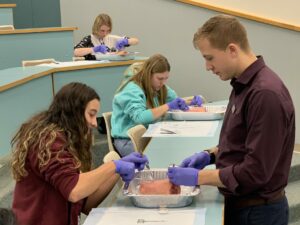
Prospective physicians who want to get the most out of their medical training should look to go rural.
This is the advice of Scott Bell, a medical clerkship student who completed much of the past year training in Brooks, located about two hours east of Calgary.
Bell wraps up his final weeks in the UCalgary Longitudinal Integrated Clerkship (UCLIC) program next month after studying the majority of his sub-disciplines including emergency, anesthesia, obstetrics, psychiatry, and family medicine under the guidance of a preceptor, Brooks physician Dr. Erich van der Linde, along with a few weeks in the Yukon.
Bell explained that having exposure to myriad learning situations in rural sites was invaluable.
“It’s much easier to reduce your scope of practice as you go on than to expand it,” he said.
“I would certainly encourage more students to go and train this way.”
Bell grew up southwest of Calgary in the Longview/Bragg Creek area and spent his high school years in Calgary. His path to becoming a physician started after he completed his doctorate in neuroscience at McGill University in Montreal, following his undergraduate degree at the University of Victoria.
His experience with clients during his neuroscience career encouraged him to apply to medicine.
Bell’s exposure to rural medicine has left him amazed at the impact even one health professional can have in a rural setting.
“I really enjoyed the scope of rural practice and I think I appreciated the fact of how much … [a health professional] can bring to communities.
“That is something that is pretty remarkable … because you can make pretty big differences.”

Bell conveyed his love for rural during a recent Let’s Go Rural! High School Event for high school students at Medicine Hat College–Brooks Campus that was co-sponsored by RhPAP and the City of Brooks. Forty-seven students participated in the hands-on Skills event, which also touched on intravenous starts and immunization, wound management, high fidelity simulation, spinal motion restriction, and supportive mental health conversations.
There, he instructed a suturing station where students could learn more about the technique.
“I do see the need for the next generation of people interested in medicine to come and serve the rural areas. And I think that the number one place that you can recruit that from is the communities themselves,” Bell explained.
“So, I really thought the initiative was a noble thing.”
Bell alluded to a survey of participants conducted after the event that indicated all who took part were more likely to consider a rural medical career.
“Many of the students had very positive things to say,” he added, noting that he even got a shout-out from one student who remarked they “liked stitching with the blonde guy.”
Bell looks back on his own journey and professed it isn’t often someone knows for sure what career path to take without some influence.
“If people don’t directly tell them that this is something that’s good and achievable, and something that you, as a young person, can go and pursue [as a career] it might not be considered as an option,” he explained.
Bell said the best part of his rural experience has been his exposure to a broad scope of practice—and often as the only learner working alongside a preceptor.
“It’s definitely the most rewarding part of my training.”
— Lorena Franchuk
